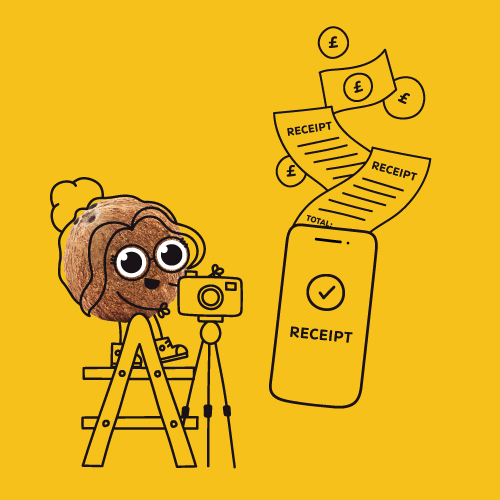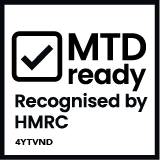Finding out that you haven’t got enough money to pay your tax bill is the stuff of nightmares for sole traders and freelancers.
Even if you can borrow from others to pay your tax bill, you’re reluctant to, because paying it back can be a real struggle. But there again, going forward, how do you earn enough to cover your living costs and pay the tax you owe?
This worrying scenario is easily avoidable, if you put away enough money each week, month or day when your invoices are paid. It takes discipline and some organisation, but it can be done. Technology can also really help to ensure that you gain peace of mind from knowing you’ve put enough away to pay your tax bill.
Need-to-know Income Tax facts for sole traders and freelancers
● As a sole trader or freelancer, you pay tax on your profits, which is your total business income minus allowable business expenses. The more profit you make, the more tax you pay.
● Thanks to the trading allowance, no tax is payable on your first £1,000 of income – as long as you don’t claim any tax expenses. If you do claim business expenses, you don’t get the trading allowance.
● Sole traders, freelancers and others get a Personal Allowance of £12,570 a year. No tax is payable until you earn more than this.
● The Personal Allowance decreases by £1 for every £2 of net income over £100,000 and you don’t get any Personal Allowance if you earn more than £125,140 a year.
● Sole traders and freelancers with taxable profits of between £12,571 and £50,270 pay 20% Income Tax (the basic rate); those with profits of £50,271-£125,140 pay 40% (the higher rate);and those with profits of more than £125,140 pay 45% (the additional rate).
● 2023/24 tax year for all figures quoted above. Income Tax bands are different if you live in Scotland.
● For the 2024/25 tax year (England, Wales and Northern Ireland), the thresholds are: 20% Income Tax on£12,571-£37,700; 40% on £37,701-£125,140; 45% on earnings over £125,140.
Need-to-know National Insurance facts for sole traders and freelancers
● In 2023-24 and beyond, those earning between £6,725 and £12,570 won’t pay any Class 2 National Insurance contributions (NICs). They’ll still build-up National Insurance credits, which gives them access to contributory benefits.
● If you earn more than £12,570 a year, you'll pay Class 2 NICs of £3.45 a week (about £180 for the year).
● From 2024-25, Class 2 NICs will be scrapped, but self-employed people will still build up National Insurance credits.
● Via Self Assessment (the system HMRC uses to collect tax), self-employed people also pay Class 4 NICs of9% on profits between £12,570 and £50,270, and 2% on profits over £50,270 (2023/24 tax year for all NI figures quoted).
● From 6 April 2024, Class 4 NICs will fall from 9% to 8%.
How much should sole traders and freelancers put away for tax?
● If you expect to earn up to £50,000 a year, putting away 15%-20% of your total income is advised, whether each week, month or when an invoice is paid.
● About 35%-40% should cover you if you expect to earn £50,271-£125,140.
● If you expect to earn more than £125,140 a year, putting away 40%-45% should cover your tax bill. If there’s any money left over once you’ve paid your tax bill, you can take it out for yourself.
Top tip! Paying your tax money into a separate bank savings account is a wise idea, because you’re less likely to use it if it’s harder to access, which means the money will be there when you need to pay HMRC.
HMRC online self-employed ready reckoner tax tool
To better enable sole traders and freelancers to put enough away to pay their tax, HMRC has created a handy online self-employed ready reckoner. You enter your estimated weekly or monthly profit to get a rough idea of how much Income Tax and NICs you’re likely to have to pay.
Examples
● Estimated monthly profit £1,500 – put away£146.17 a month.
● Estimated monthly profit£2,000 – put away £291.17 a month.
● Estimated monthly profit£2,500 – put away £436.17 a month.
● Estimated monthly profit£3,000 – put away £581.17 a month.
● Estimated monthly profit £5,000 – put away £1,266.58 a month.
The tool assumes that you have no other taxable income and that you receive the standard Personal Allowance. The calculation does not include unpaid tax from previous tax years. The results will be different if you specify that you live in Scotland.
Set up a Budget Payment Plan?
As long as your previous tax payments are up to date, HMRC allows you to set up a Budget Payment Plan, where you make monthly or weekly payments towards your next tax bill. You choose how much you want to pay and how often, while you can pause payments, for example, if your work tails off for a while. To create your Budget Payment Plan, you set up a Direct Debit via your HMRC online account.
How Coconut makes it easy to put away enough tax
● Coconut makes it really simple to put aside enough money to pay your annual tax bill. You simply open up Coconut and in the ‘Taxes’ tab, you’ll find your suggested amount to set aside. It includes both National Insurance and Income Tax.
● The figure you see is based on the rate you’ve selected, as well as the income and expenses from your transactions that have been categorised as business income and/or expenses.
● Any transactions categorised as 'Personal' won’t be taken into account. To amend the rate tap ‘Set-Aside Rate’ and choose the savings rate that would best suit you, based on your expected income. Job done.
Start your 30-day free trial of Coconut today.











